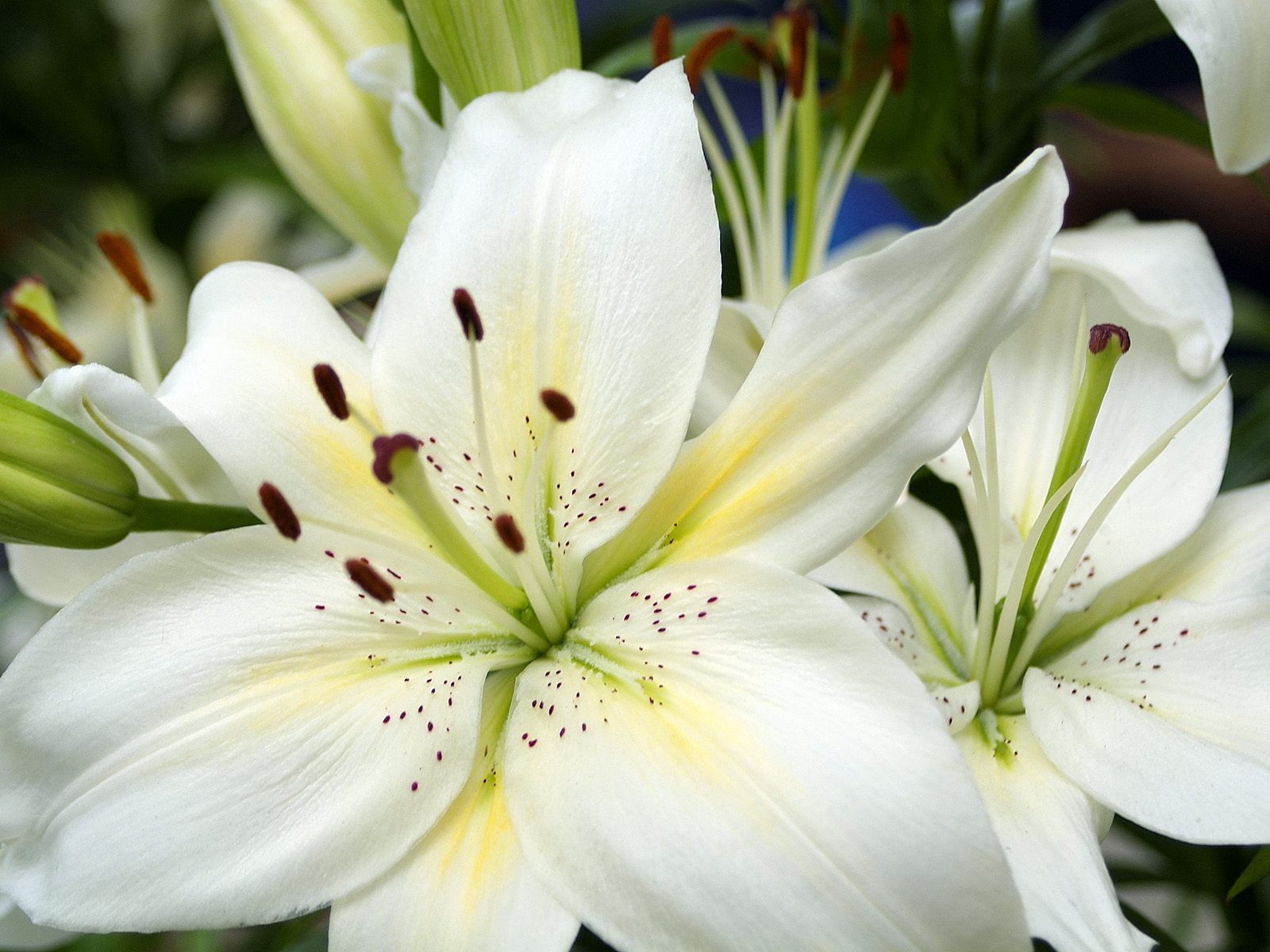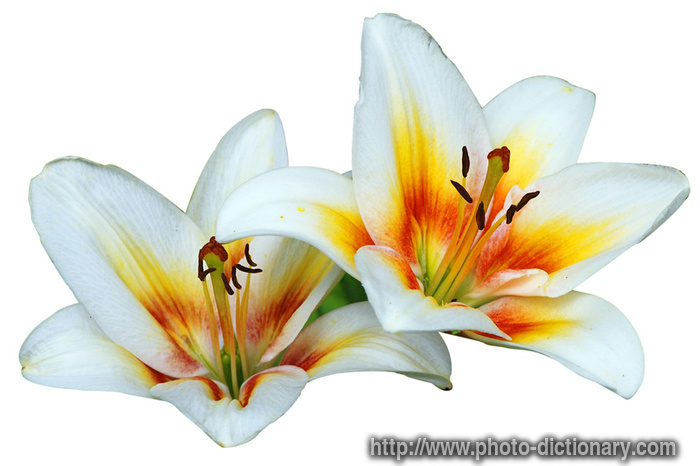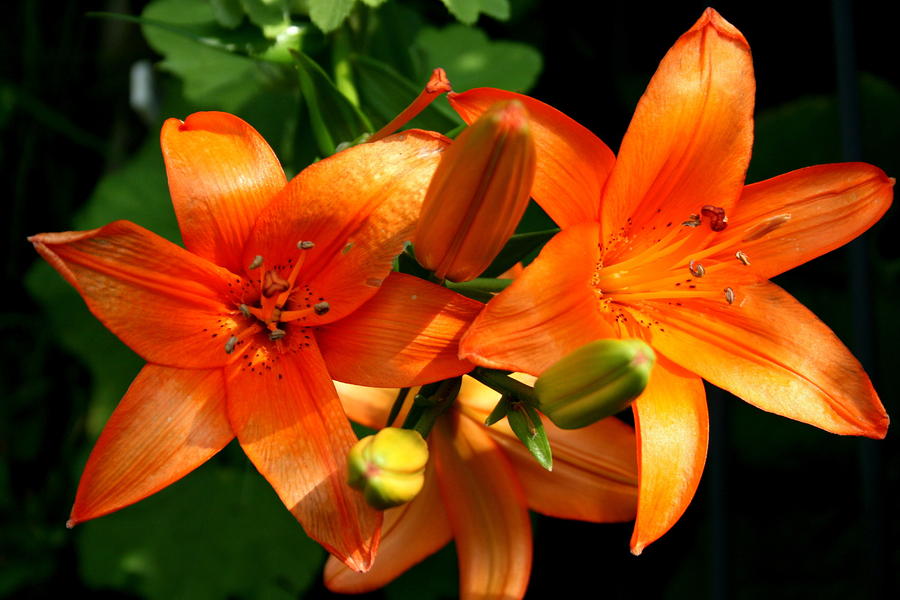Lilies Biography
The botanic name Lilium is the Latin form and is a Linnaean name. The Latin name is derived from the Greek λείριον, leírion, generally assumed to refer to true, white lilies as exemplified by the Madonna lily.[1] The word was borrowed from Coptic (dial. Fayyumic) hleri, from standard hreri, from Demotic hrry, from Egyptian hrṛt "flower". Meillet maintains that both the Egyptian and the Greek word are possible loans from an extinct, substratum language of the Eastern Mediterranean. The Greeks also used the word κρῖνον, krīnon, albeit for non-white lilies.
The term "lily" has in the past been applied to numerous different flowering plants, often with only superficial resemblance to the true lily, including lotus, ranunculus, tulip, iris, anemone, agapanthus, zantedeschia, daylily, and others. All English translations of the bible render the Hebrew shūshan, shōshan, shōshannā as "lily". For instance, the "lily among the thorns" of Song of Solomon may be the honeysuckle.[2]
For a list of other species described as lilies, see Lily (disambiguation).
The range of lilies in the Old World extends across much of Europe, across most of Asia to Japan, south to India, to Indochina and to the Philippines. In the New World they extend from southern Canada through much of the United States. They are commonly adapted to either woodland habitats, often montane, or sometimes to grassland habitats. A few can survive in marshland and epiphytes are known in tropical southeast Asia. In general they prefer moderately acidic or lime-free soils.
Lilium longiflorum flower – 1. Stigma, 2. Style, 3. Stamens, 4. Filament, 5. Tepal
Lilies are tall perennials ranging in height from 2–6 ft (60–180 cm). They form naked or tunicless scaly underground bulbs which are their overwintering organs. In some North American species the base of the bulb develops into rhizomes, on which numerous small bulbs are found. Some species develop stolons. Most bulbs are deeply buried, but a few species form bulbs near the soil surface. Many species form stem-roots. With these, the bulb grows naturally at some depth in the soil, and each year the new stem puts out adventitious roots above the bulb as it emerges from the soil. These roots are in addition to the basal roots that develop at the base of the bulb.
The flowers are large, often fragrant, and come in a range of colours including whites, yellows, oranges, pinks, reds and purples. Markings include spots and brush strokes. The plants are late spring- or summer-flowering. Flowers are borne in racemes or umbels at the tip of the stem, with six tepals spreading or reflexed, to give flowers varying from funnel shape to a "Turk's cap". The tepals are free from each other, and bear a nectary at the base of each flower. The ovary is 'superior', borne above the point of attachment of the anthers. The fruit is a three-celled capsule.[3]
Seeds ripen in late summer. They exhibit varying and sometimes complex germination patterns, many adapted to cool temperate climates.
Most cool temperate species are dormant in winter. Most species are deciduous, but a few species (Lilium candidum, Lilium catesbaei) bear a basal rosette of leaves during dormancy.
Lilies
Lilies
Lilies
Lilies
Lilies
Lilies
Lilies
Lilies
Lilies
Lilies
Lilies
Lilies
Lilies
Lilies
Lilies
Lilies
Lilies
Lilies
Lilies
Lilies




















No comments:
Post a Comment